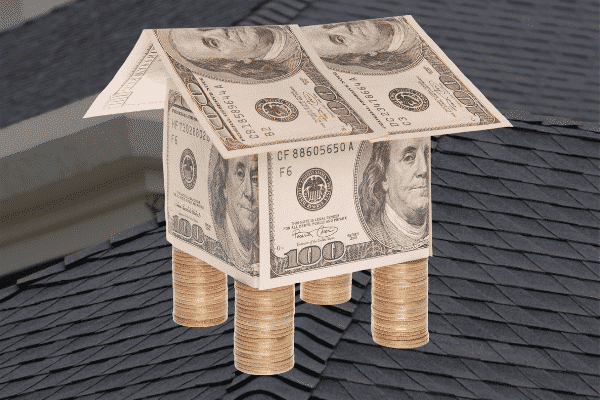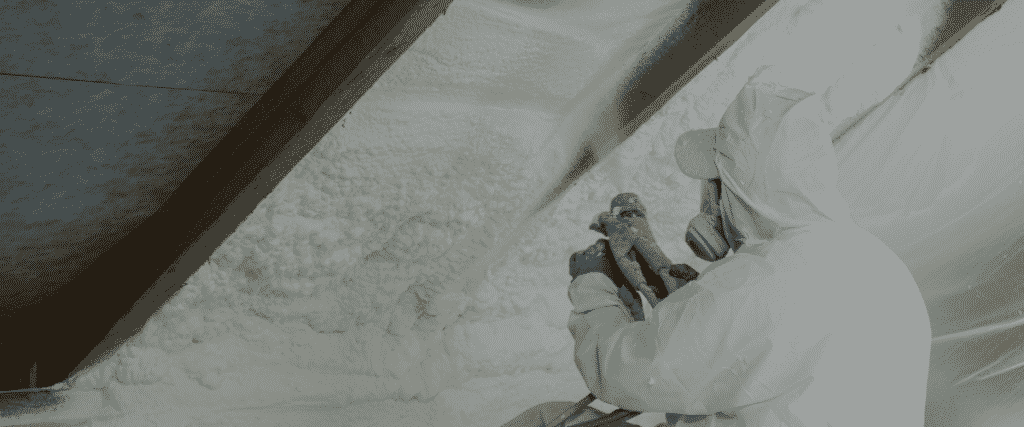Essentially, spray foam is a long-term roofing solution that can serve you for decades. Installing a spray foam roof (SFR) is a worthwhile investment that pays for itself in the long-run through power bill savings.
A building loses more than a third of its energy through air leakage. The signs your home is not well insulated can show themselves both in inconsistent air temperatures and in your electric bills.
Spray foam solves this problem by providing complete insulation to your roof. It’s applied alongside a sealant that protects the roof from UV rays damage and reflects the sun’s heat, thereby keeping the building cool. As a result, a spray foam roof can save you up to 30% of your power bills.
What is a Spray Foam Roof?
Spray polyurethane foam (SPF) is an insulating substance that can be applied to an existing roof to improve its performance and provide foolproof sealing against the elements. It’s usually stored in liquid form, only turning into a foam and expanding to cover the surface upon application.

A spray foam roof is installed by mixing two liquids, which are kept in separate containers. Once on the site, the installer conveys the liquids through heated hoses into a gun where they mix and exit as foam.
As it hits the substrate (in this case, the existing roof), the foam expands into a thick layer and firmly holds onto the surface, sealing any existing dents and gaps completely. The existing roof could be made of either concrete, metal, wood, etc.
When comparing open-cell vs closed cell spray foam for roofing purposes, open-cell is the better choice. Once the SPF has dried, the installer applies an elastomeric coating to protect the roof from UV rays.
How Long Does Spray Foam Roof Last?
A spray foam roof can last for more than 30 years. However, the performance of the roof will depend on several factors.
- Proper Application
As mentioned, a spray foam roof is unique in that you can apply it over your old roof. However, the installer must prepare the roof by giving it a thorough pressure wash before application. After prepping the roof, the installer, who must be experienced, should then use the right equipment to apply the spray foam followed by the elastomeric coating.
- Maintenance
Even though a spray foam roof holds up pretty well against catastrophes, it’s essential to inspect the roof after a hailstorm, tornado, etc., to check for any damages. This ensures early detection of issues that may deteriorate if not addressed. In addition to this, a proper maintenance regime requires yearly or half-yearly check-ups even if the weather has been favorable.
Other than the annual/semi-annual maintenance, a spray foam roof requires a recoating every 10 to 15 years for best performance. During recoating, the installer will clean the roof and check for any mechanical damages before coating it again.
- Other Factors
The roof’s longevity can also be determined by the application thickness and density, which ultimately determines the warranty duration. In most cases, the contractor will give you a warranty of anything from 10 years upwards. For instance, a 15-year warranty roof will require a recoating on the 16th year. Failure to perform the recoating will drastically reduce the roof’s effectiveness and shorten its lifetime.
Climate can also impact the life of your roof significantly. A roof that’s subjected to too harsh weather elements will most certainly wear off faster than one in a milder climate. In the case of the former, it’ll require more regular maintenance to last longer.
How Much Does a (SFR) Cost?

Installing a spray foam roof is a cost-effective roofing solution, no matter the initial outlay. This is because it results in massive savings in power bills due to the superior insulation it offers.
Essentially, the total cost you spend will depend on the size of your roof. But the standard cost per square foot ranges between $2-$5, depending on the contractor, as well as the application thickness and density.
Yearly maintenance will cost you around 0.6% of the installation cost but may be lower or higher depending on the repairs needed. As for the 10 or 15-year recoating, you may spend around 40% of the initial installation cost.
Benefits of Installing a Spray Foam Roof?
We have already covered most of the benefits of a spray foam roof, but here is a quick summary.
- Makes your home energy-efficient – Spray foam has a high R-Value, which gives a building maximum insulation. Additionally, the elastomeric coating reflects sun rays, thereby minimizing the heat in the building. All these go a long way in reducing your heating and cooling costs.
- Improves the aesthetic appeal of your roof – A well-done spray foam job will lift the appearance of your roof and stay looking great for years as it braves the elements pretty well.
- Seals your building from water leakage – Once the foam hits the surface, it penetrates any gaps and cracks on the existing roof. This provides a seamless finishing that’s completely leak-free.
- Convenient roofing option – You can continue using the building even when re-roofing is taking place as you don’t have to rip off the existing roof.
- Durable – Spray foam roof is a durable roofing solution, which makes it cost-effective.

